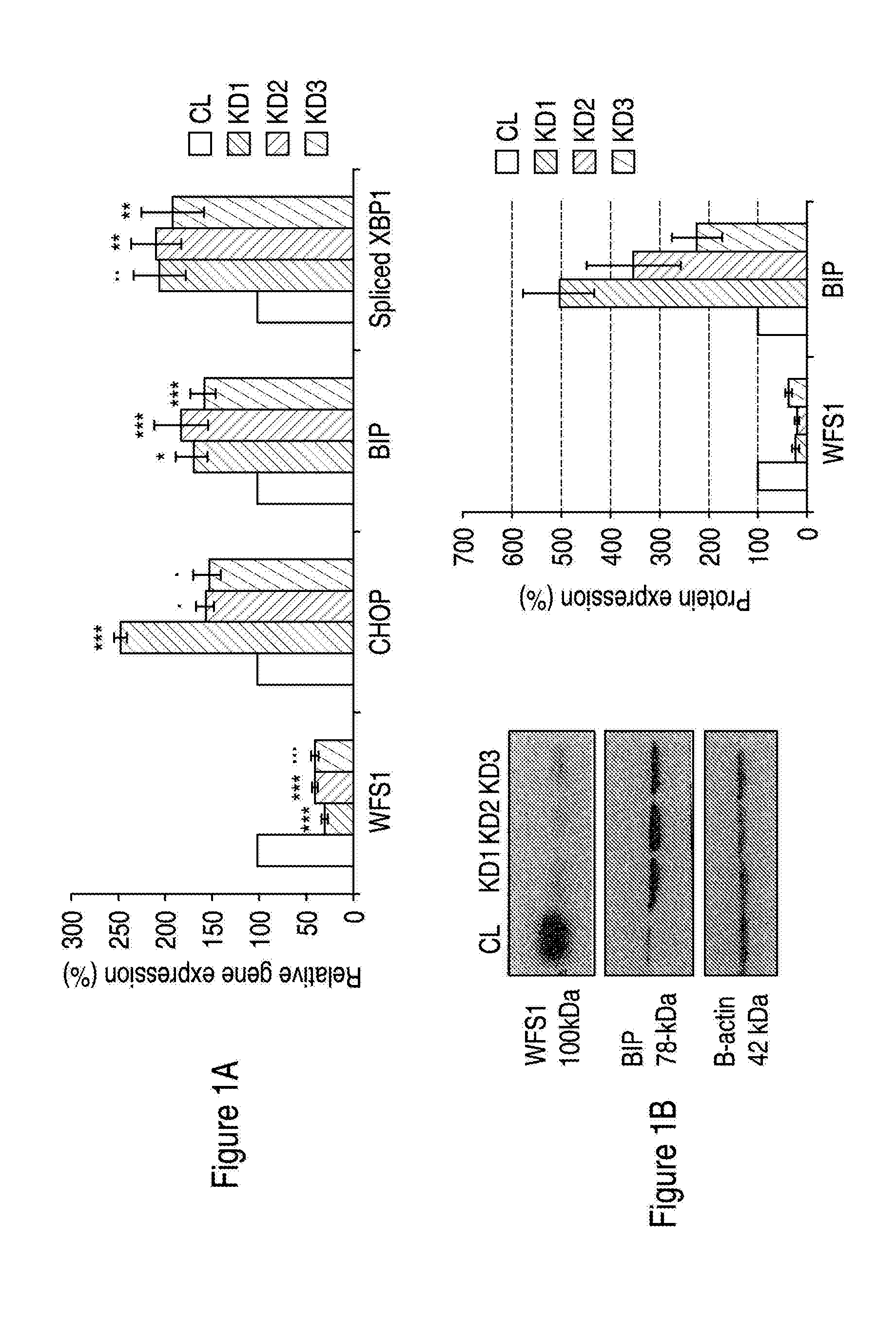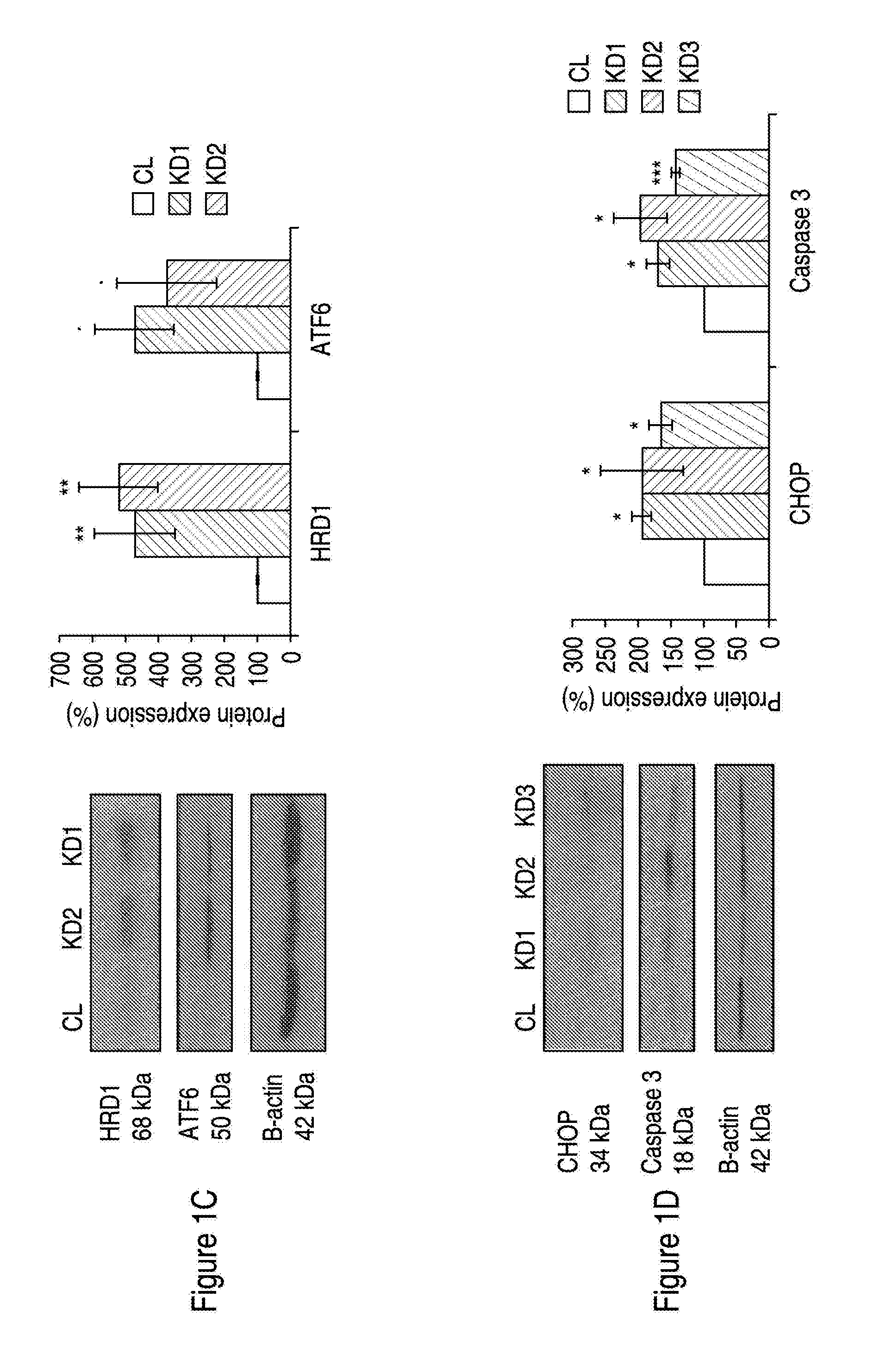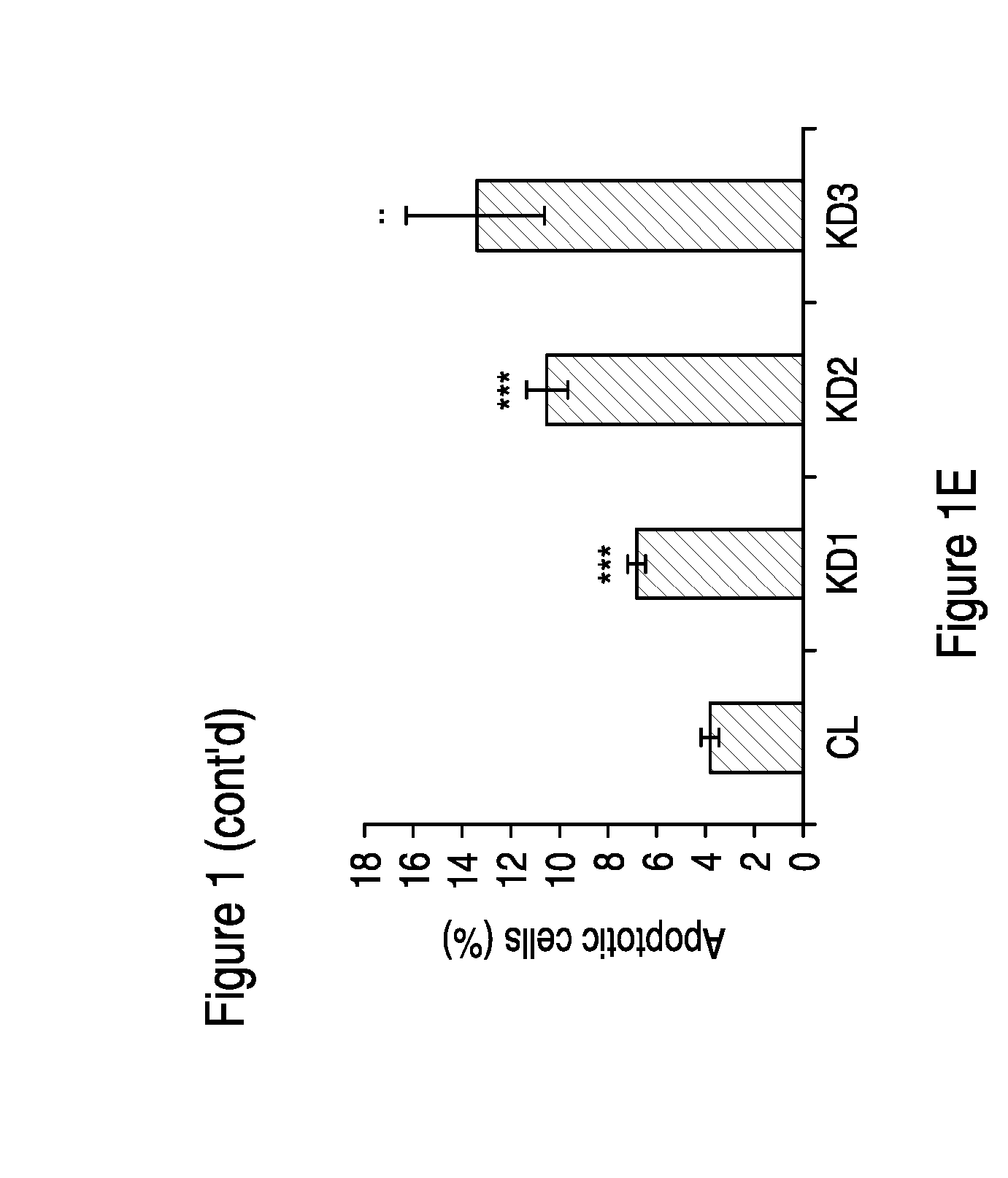Treatment for neurodegeneration
a neurodegeneration and treatment technology, applied in combinational chemistry, botany apparatus and processes, chemical libraries, etc., can solve the problems of neurodegeneration treatment or prevention, no known methods at present, and no drugs in the pipeline to treat this debilitating disease. , to achieve the effect of preventing cell death, preventing neurodegeneration, and significant p21cip downregulation
- Summary
- Abstract
- Description
- Claims
- Application Information
AI Technical Summary
Benefits of technology
Problems solved by technology
Method used
Image
Examples
example 1
Role of p21 in WSF-Depleted Cells
Materials and Methods
[0149]Cell Culture and Transfection:
[0150]Stably depleted WFS1 clones were prepared in human neuroblastoma cell line SK-NA-S using shRNA (Open Biosystems) and selected in medium containing puromycin at 2.5 μg / ml. SK-N-AS cell line and stably depleted clones were grown in DMEM (4500 mg / I L-glucose, L-glutamine and pyruvate, Invitrogen) supplemented with 10% FCS, penicillin (100 units / mil), streptomycin (100 μg / ml), glutamine and non-essential amino acids. The NT2 cells were grown in DMEM: F12 HAM media (SIGMA) supplemented with 10% FCS, penicillin (100 units / mil), streptomycin (100 μg / ml) and L-glutamine. The HEK293 cells were grown in DMEM (as above) with 10% FCS and penicillin and streptomycin.
[0151]Transient gene silencing was performed using small interfering RNA (siRNA, Ambion) with two oligonucleotides (WFS1-57 and WFS1-58; targeting different regions of WFS1), at final concentration 8 nM. The transfection was performed usin...
example 2
Further Examples of Drugs that Increase p21 Expression or Activity and Consequently Reduce Cell Death in Neuronal Cells
[0184]We tested a number of known compounds showing an increase in the expression and / or functional activity of p21 for their effects on cell death in neuronal cells. We found that Flurbiprofen, Dexrasoxane and Rapamycin all increased expression and / or the functional activity of p21 and reduce apoptosis in neuroblastoma cells.
Materials and Methods
[0185]Cell Culture:
[0186]Human SHSY-5Y neuroblastoma cells were grown in DMEM:F12 supplemented with 10% FCS, penicillin (100 units / mil), streptomycin (100 μg / ml) and L-glutamine. The cells were plated for 24 hours into 96 well plates (5000 cells per well) before treatment with drugs. Each drug (doses applied in separate figures) and the control (DMSO) were applied to 8 technical replicate wells. After 24 hours treatment the cells were harvested by fixation in Glyofix and were post-fixed with ice cold 85% ethanol.
High Conten...
example 3
Screening of Further Compounds for Identification of WS Therapeutic Agents
[0238]Further compounds were tested to determine their effect on the cell cycle, p21cip1 expression, and the effects of p21cip1 expression in treated cells on the cell cycle and apoptosis.
Materials and Methods
[0239]SK-N-AS human neuroblastoma cell line was purchased from ECACC and grown in DMEM (with 4.5 g / L D-glucose; L-glutamine and pyruvate) supplemented with 10% foetal calf serum (FCS), 100 U penicillin-streptomycin, 2 mM L-glutamine and 1×MEM non-essential amino acids (MEM-NEAA) in a 37° C. / 5% CO2 humidified atmosphere incubator. Cultures were grown to confluence and passed 1 in 5. Cells were frozen at −80° C. in FCS containing DMSO at a density of 3 million cells / ml.
[0240]C7 is SK-N-AS derived cell line stably transfected with a scrambled shRNA. KD2 and KD3 are SK-N-AS derived stably depleted WFS1 cell lines. WFS1 depletion in KD2 is ∞78% and in KD3 is ∞60% (Gharanei et al., Hum Mol Genet 22(...
PUM
 Login to View More
Login to View More Abstract
Description
Claims
Application Information
 Login to View More
Login to View More - R&D
- Intellectual Property
- Life Sciences
- Materials
- Tech Scout
- Unparalleled Data Quality
- Higher Quality Content
- 60% Fewer Hallucinations
Browse by: Latest US Patents, China's latest patents, Technical Efficacy Thesaurus, Application Domain, Technology Topic, Popular Technical Reports.
© 2025 PatSnap. All rights reserved.Legal|Privacy policy|Modern Slavery Act Transparency Statement|Sitemap|About US| Contact US: help@patsnap.com



